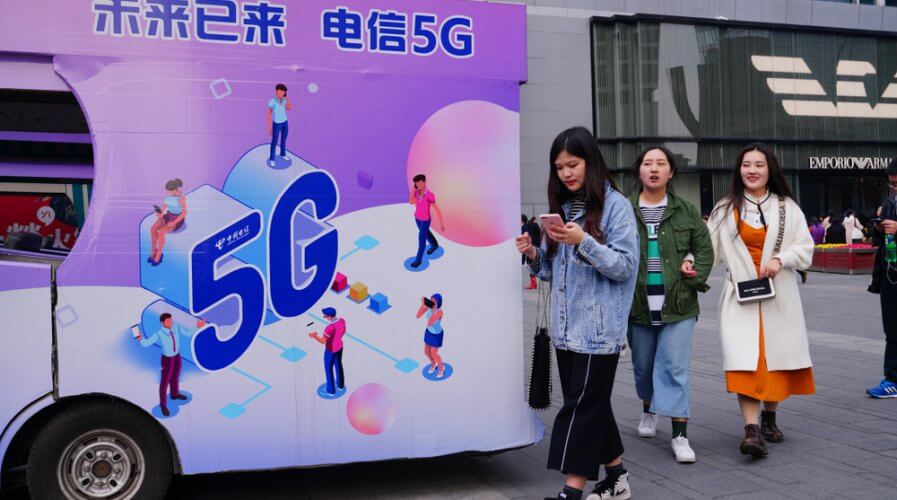
Here’s how China’s path to commercial 5G looks like. Source: Shutterstock
Never one to be last, here’s how China is dominating the 5G race
5G HAS BEEN causing waves in the communication industry, and rightfully so. It promises lower latency, greater stability, and also incredible speeds. At its peak, it can be 100 times faster than its 4G counterpart.
With all that 5G promises, it is the light at the end of the tunnel for the already shrinking global smartphone market.
While it is expected that the global smartphone growth remained subdued in the coming years, a forecast by IDC suggests that in 2020, the global smartphone market will grow by 1.5 percent after 3 consecutive years of market contraction. Out of this, 5G smartphones will account for 14 percent (190 million) of all smartphones that are shipped worldwide.
“This surge in market growth is largely fueled by recent developments in the China market, and in anticipation of aggressive activity from the smartphone supply chain and outsourcing providers”, said IDC Worldwide Mobile Device Trackers Program VP Ryan Reith.
Countries such as South Korea, Australia, UK, and the US are racing to dominate the 5G economy, but China is emerging as the leader of the pack.
Whilst these countries have just launched initial commercial 5G services in the second quarter of 2019, Chinese telcos (China Mobile, China Unicom, and China Telecom) have already announced that they are rolling out 5G services commercially and at scale, with pricing that is similar to that of existing 4G services in the country.
Backed by the government, Chinese carriers have long staked their hopes on the mass adoption of 5G services. Even before 5G was officially launched, vendors educating customers and facilitating the arrival of 5G handsets.
Given the opportunity that 5G presents to businesses, including virtual reality and augmented reality (VR and AR) which are often handset driven, mobile giants such as Xiaomi are planning to launch at least 10 5G smartphones next year.
Currently, 5G seems to be on the pricey side. However, in 2020, it is expected that the price of these phones will drop to create a market surge.
The wonders of 5G networks is certainly not solely confined to telcos, and it is not only consumers that will reap its benefit. With the speed, reduced latency and massive data capacity that 5G offers, 5G opens up a whole new world for businesses of all sizes.
With 5G, businesses can be supercharged, where there is a big boost in efficiency and productivity. Operational costs can also be reduced, and resources can be freed up to invest in new technology and drive innovation.
For example, with 5G, more data can be collected. This helps improve big data analytics, allowing businesses to derive more value from their data.
Also, 5G shares a symbiotic relationship with artificial intelligence (AI) — it provides the infrastructure and data that AI needs to be successful, and AI can, in turn, provide the ability to make sense of the complexity of 5G. All these can propel a business forward.
Ultimately, 5G technology can bring much joy to both consumers and businesses alike. Because it is the consumers, after all, that keeps a business running, business owners would be wise to pay attention to the advancement of 5G, and explore ways to leverage it to provide a better experience to their customers.
READ MORE
- Strategies for Democratizing GenAI
- The criticality of endpoint management in cybersecurity and operations
- Ethical AI: The renewed importance of safeguarding data and customer privacy in Generative AI applications
- How Japan balances AI-driven opportunities with cybersecurity needs
- Deploying SASE: Benchmarking your approach


